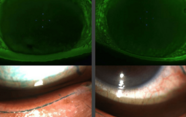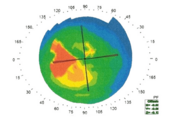Created in Our Own Image
If we can imagine aliens as anything, why do they look so… human?
Jed Boye | | 3 min read | Discussion

Humans have always had a fascination with aliens. From near-endless novels, films, and even music to our attempts to communicate with whatever may reside within the void, aliens have been a long-lasting part of the cultural zeitgeist.
I have found it interesting that – with some exceptions to the rule, such as the Xenomorph from Alien or the Mimics from Edge of Tomorrow – authors and artists generally conceptualize aliens in a similar way. Usually, they take a humanoid form with a balloon-shaped head and relatively subdued facial features apart from their big, distinctive eyes. In fact, these eyes are so pivotal to the “alien” look that even a simple graphic of a sharpened oval with two large, well-placed almond shapes automatically prompts our brains to see an extraterrestrial creature. But where did this archetypal alien look originate – and what’s up with those eyes?
The first description of these now-stereotypical aliens appeared in The Unknown Danger: A Vision of the Future, a 1933 children’s book written by Swedish author Gustav Sandgren (1). The book described (and provided illustrations of) a race of short extraterrestrials clothed in soft, gray fabric, with bald heads and large, dark, gleaming eyes.
But why? When our imaginations can create literally anything, why choose something so close to a human? Is it that, in a way, we project ourselves onto these fictional beings? I think it’s very telling that this projection begins with the eyes!
Do you have any thoughts on this topic? If so, please send them via [email protected] or leave a comment below.
- F Mendelsohn, MM Levy, “G,” Aliens in Popular Culture, 135. Greenwood: 2019.
I have always been fascinated by stories. During my biomedical sciences degree, though I enjoyed wet lab sessions, I was truly in my element when sitting down to write up my results and find the stories within the data. Working at Texere gives me the opportunity to delve into a plethora of interesting stories, sharing them with a wide audience as I go.











